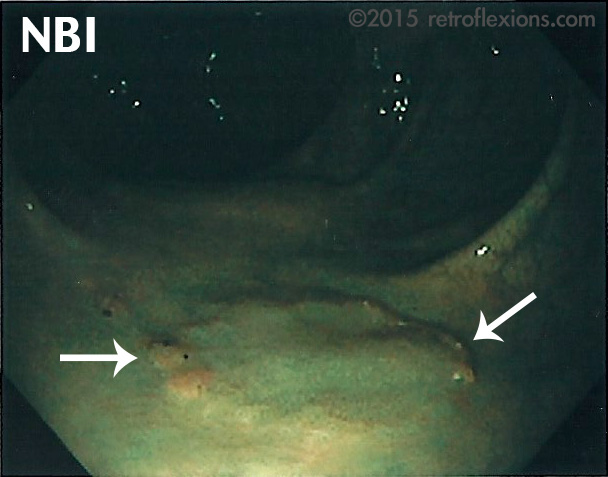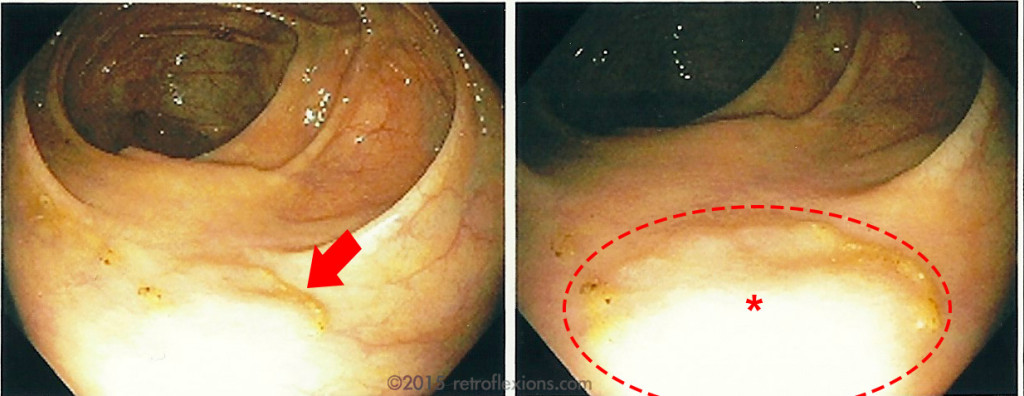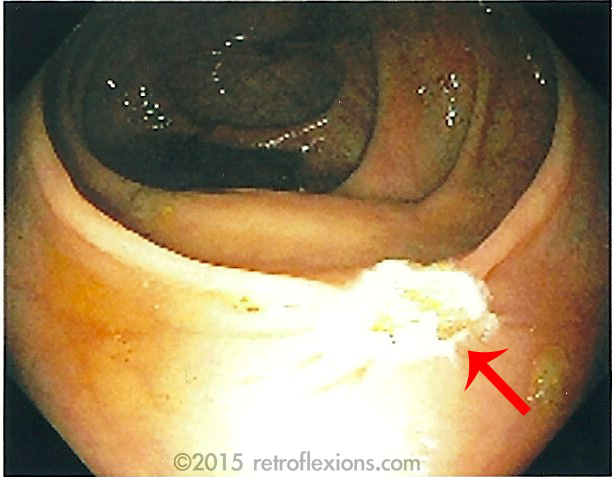This is a flat polyp. It’s about the size of a dime or so. This was found on a routine colonoscopy in the ascending colon. The patient had an excellent bowel prep.
Colonoscopy has been shown to prevent colon cancer by detecting and removing polyps which are known to be precancerous (known as adenomatous polyps). If you remove the precursor to colon cancer, then cancer never develops…at least that is the theory. While colonoscopy is clearly the best test to prevent colon cancer, it is far from perfect.
As it turns out, colonoscopy is more effective at preventing colon cancer in the left side of the colon when compared to the right side. There are various reasons for this. One reason is that flat polyps, which are much harder to detect than conventional polyps, are found more commonly in the right colon. A routine colonoscopy can miss these flat polyps easily, especially if the quality of the bowel preparation (“the prep“) is not perfect. Left undetected, the polyp continues to grow and mutate, eventually leading to cancer in some patients. Flat polyps make up about 9% of all precancerous polyps.
This polyp was only found because the prep was excellent, and because a careful inspection was performed. If something looks a little abnormal, a closer look is warranted. In the picture above, I used a special mode on the scope called “narrow band imaging” (NBI) to enhance the contrast and make the polyp more clearly defined.
Once identified, the polyp is easily resected with submucosal injection of saline and a hot snare. Pathology revealed a sessile serrated adenoma.
If you enjoyed this article, sign up for our free newsletter and never miss a post!
References:
Bressler B, Paszat LF, Chen Z, et al. Rates of new or missed colorectal cancers after colonoscopy and their risk factors: a population-based analysis. Gastroenterology 2007;132:96–102.
Soetikno RM, Kaltenbach T, Rouse RV, et al. Prevalence of nonpolypoid (flat and depressed) colorectal neoplasms in asymptomatic and symptomatic adults. JAMA 2008;299:1027-35.


